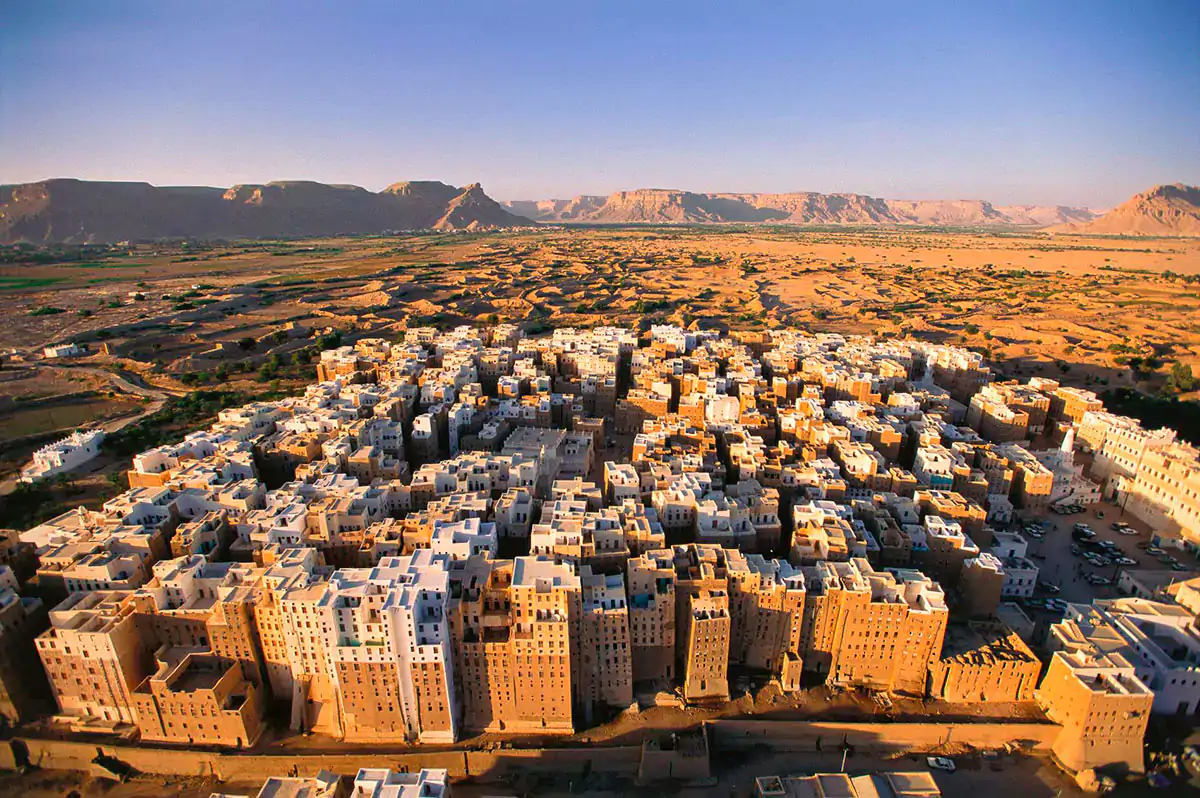Located in central-eastern Yemen, in this walled city they’ve been constructing vertically for centuries. Founded in the 16th century, its adobe-built towers reach up to eight stories high and provide shelter for more than 7,000 people.
Erected on a hill, it’s situated at hundreds of metres on the cliffs of Wadi Hadramaut, which allows it to escape constant flooding. In fact, Shibam was born on the foundations of an ancient city devastated by a flood and curiously the buildings that survived that disaster were the Mosque and the 13th century castle.
Construction started around 500 years ago in adobe, when this type of building was a milestone, although the structures that endured were between 100 and 200 years old. This is why it’s considered as the world’s first skyscraper city.
The city’s urban development is an example of human settlement, in which everything make sense. The irrigated terrain, is used for agriculture and is complemented by the generation of mud for its use in the construction and maintenance of the buildings.
Historically, Shibam is venerated for its ingenious urban planning methods, especially the architecture that harmonises with a population that is profoundly dedicated to traditional Islamic culture. This is the reason why in 1982, UNESCO granted it the privilege of being a World Heritage Centre.






